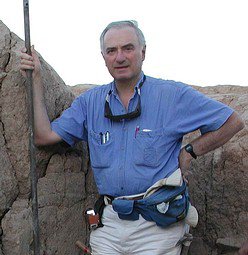ABRAHAM. The rise of the self
Curated by Ignacio Carbajosa Pérez. With the collaboration of Giorgio Buccellati.
The first two rooms of the exhibition try to contextualize Abraham’s figure from the point of view of time and space. It begins from the birth of the city-state (3200 BC) in Mesopotamia, which was an urban revolution with a concentration and organization of people never seen before. There were two characteristics of this new revolutionary organization: the first was that each person’s worth was not decided by his personality but by his value to society, and the second was that it stopped the direct relationship between man and nature.
The city is therefore perceived as alienating and tribes arise in opposition to this organization (2300 – 1800 BC). These peasant populations moved away toward the steppe of Syria. The biblical Israel harks back to these tribes.
The third room of the exhibition tries to illustrate the big change in religious method that occurs with Abraham in the context of the Mesopotamic religions. The first part of the room, therefore, shows the polytheistic characteristics of the Mesopotamian civilization. This was not a naïve attitude, but one that hid a pretentious rationalism and a system based on the applicability of predictable laws. Fate is predictable by virtue of the laws that govern it, in which gods and men can partially open paths to divination.
The Mesopotamic divinities did not have origins in time. The gods are out of time and do not influence history. This is the great change that comes to be with the calling of Abraham, and precisely the change that we want to illustrate in the exhibition with the introduction of a tall cube which invades the room. Precisely at the origin of Israel’s religion is a historic event, the “conversion” of a man who breaks the polytheistic tradition. Abraham does not agree with the rational appropriations of the mechanisms that govern the universe. Instead of those, there is a “living God.” Abraham establishes a relationship with this divinity such that he can abandon faith in an unpredictable future.
In the fourth room, one can see a video of an interview with the archaeologist Giorgio Buccellati, who explains the change in religious method, which came about with Abraham, in the scheme of all the Mesopotamic religions.
The fifth room retraces the biblical story of Abraham: his choosing, his promise and covenant, his faith in contrast to the skepticism of Sara, and finally his trial (the sacrifice of Isaac).
The sixth room wants to show the characteristics of Abraham’s nature as are shown in the Bible, namely, it wants to show the birth of the self. The knowledge of the self as a relationship with a You that exists in history, the perception of life as work and a vocation that has been assigned by Another, and the category of a linear history in the relationship with God, are all dimensions that come into play for the first time with the calling of Abraham.
The seventh room, in parallel with the introduction of Abraham, introduces the Advent of Christ, a true descendant of Abraham according to the apostle Paul. Christ lived his very life according to the vocation that we saw begin with Abraham; life as a relationship with the Mystery that causes him to live. In the discipleship of Christ, the disciples also become descendants of Abraham and they begin to have the experience of the fulfillment of the self.
The last room has the pretense of proving, in a world dominated by the collapse of evidence and the obscuration of what man is, how the method Christ uses to unite us is none other than that of Abraham: to choose one where the self becomes clear to everyone.











